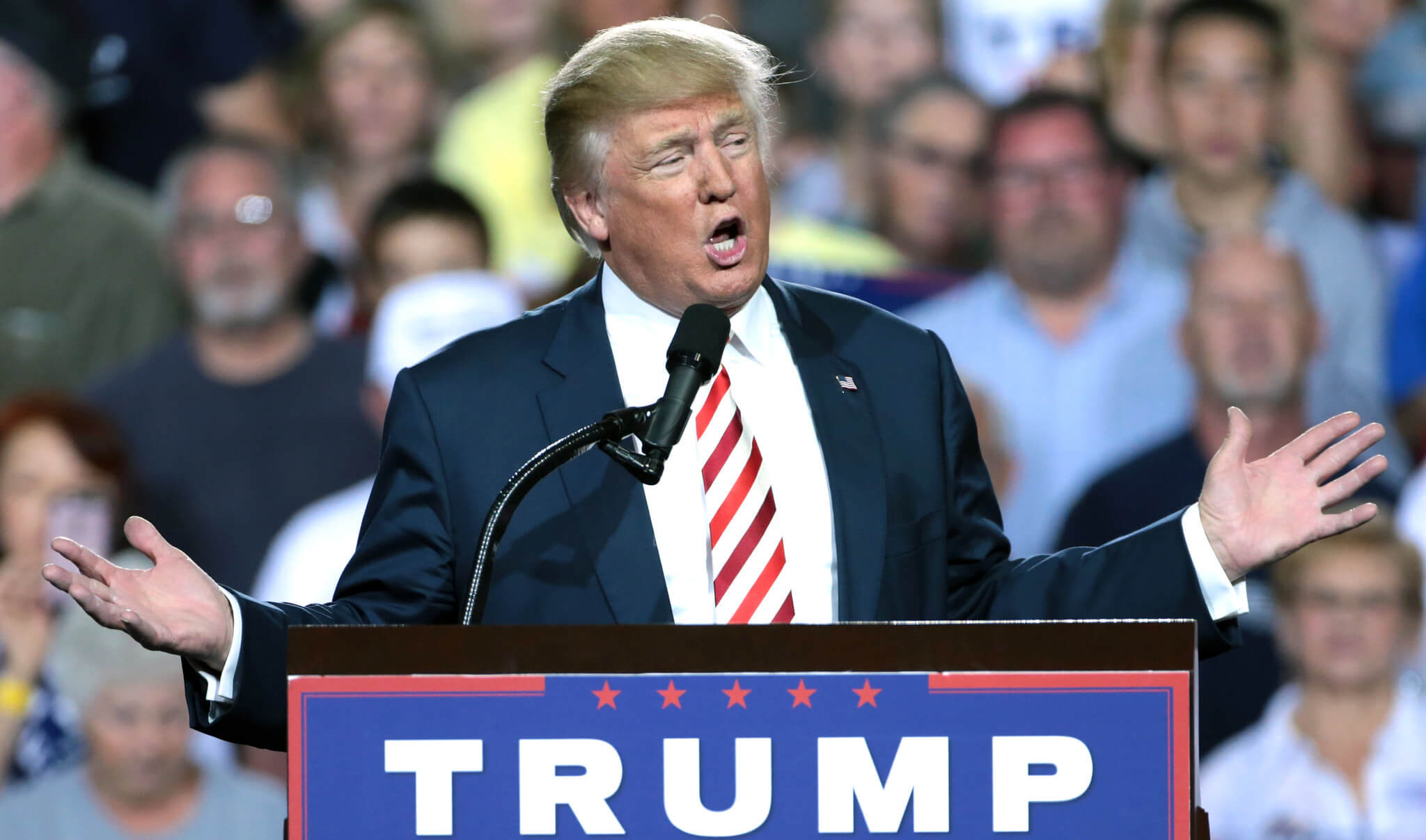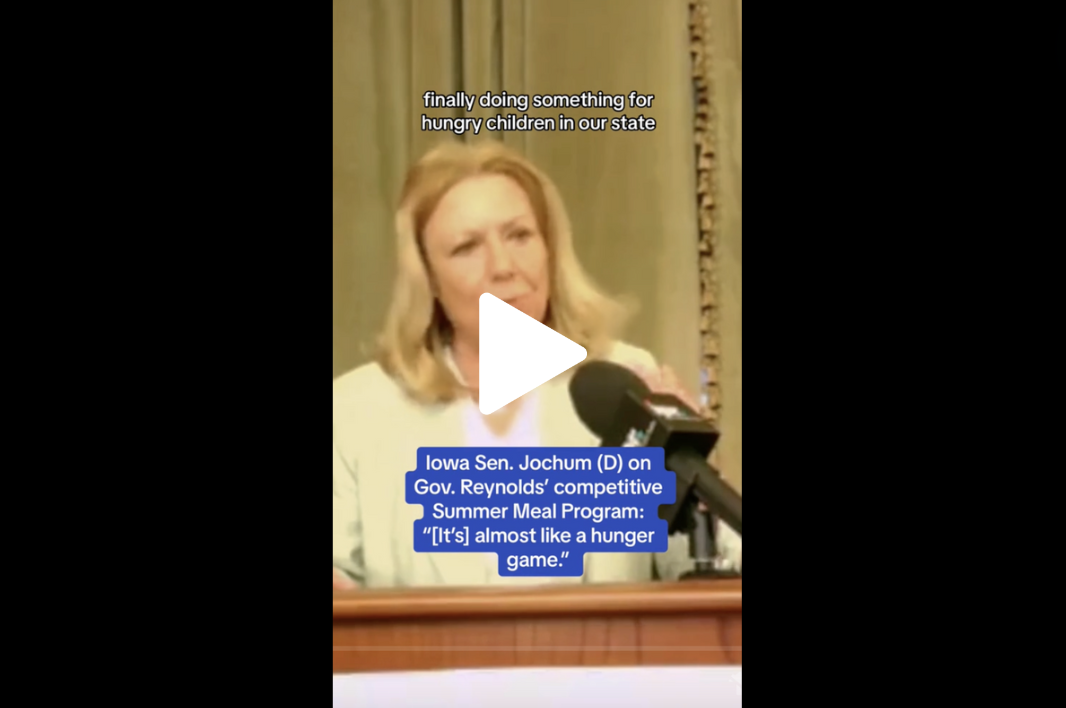
Photo by Gage Skidmore
President Donald Trump has already given us a preview of his talking points for whatever general election matchup he finds himself in.
For agricultural, Midwestern battleground states, the message is simple: “farm income is up.”
“In the eight years before my election, net farm income plummeted by 20%. You know that? I got here, you look at a chart — for 15 years actually — not eight. For 15 years, it was like a rollercoaster going down for the farmer,” Trump said recently at a rally in Des Moines.
“For soybeans, take a look at it all, it was just a one-way street, everybody was ripping off the American farmer. Now you’re going to see numbers that are going to be great. Look at even what’s happening recently, it’s incredible what’s going on, and I love it, because you deserve it.”
But, is farm income really up?
First, we’ll look at some language Trump used at a Jan. 30 rally in Des Moines and claims he has made about the nation’s farm economy. Then, let’s compare that with commodity and economic data to see how those claims stack up.
[inline-ad id=”0″]
Trump As Savior Of The Farm
Between 2000 and 2015, net farm income went from $51 billion to $81 billion.
Trump is right that it was a roller-coaster, with a low point of $39 billion in 2002 and a high of $124 billion in 2013. He is, however, wildly inaccurate that farm income plummeted for decades before he took office.
Yet, at a rally in Des Moines, just days before the Iowa caucuses, Trump claimed that the fate of farms depended on re-electing him.
“If we don’t win, your farms are going to hell, I can tell you right now,” Trump said. ‘Sell! Sell!,’ they’ll be saying. ‘Sell!’ No, but we love the farmers, we love the ranchers, we love the manufacturers. Frankly, you got plenty of that, too, in this state.”
In reality, Trump doesn’t seem to have a plan for farms, farmers, or agriculture in general. He doesn’t propose any specific plans during his hour-and-a-half long rally speech. His website doesn’t even hold a page for policy plans, it just lists “accomplishments.”
But Trump’s message is still that farmers will have to sell their property if they don’t re-elect him. And he could not be more confident in that message.
“You suffered a lot with people that were stupid, they were stupid! Under three years of my administration, net farm income has already gone up nearly 50% and will now be rising even faster,” Trump argued in Des Moines.
“What are you gonna do? You’re gonna vote for Bernie? You’re gonna vote for Bernie? Here I am on the debate stage: Well, net farm income’s gone up by 50%. Tell me, how the hell do I lose this debate? How do I lose? Well, based on the polls, I guess I’m not going to lose in this state. I don’t think I’m going to lose in any other state.”
There’s quite a bit to unpack in that, but let’s start with the farm-related claim that income is up 50%.
According to USDA numbers, and Farm Bureau calculations, this could almost be seen as true if important caveats were ignored.
[inline-ad id=”1″]
Farm Income is ‘Up’
First off, net farm income is up $26 billion since 2016. In 2017, farm income tanked in his first year in office, however.
In 2015, net farm income was at $81 billion, one of the lower marks of the Obama Administration. In Trump’s first year, farm income fell to $62 billion, and there was a $2 billion jump in federal support to farmers.
2017 and 2018 did show growth, and 2018 ended with about as much farm income as there had been in 2015, before Trump was elected.
In 2019, farm income (before federal aid) dropped by $1 billion. To make sure his “farm income is up” claim held water, an additional $5 billion in federal subsidies were distributed to farmers.
“Pretending that federal aid packages can substitute for markets and earned income is an insult. What’s worse is, just like his tax cuts that only help the rich, Trump’s ‘farmer aid’ went primarily to large operations and international companies, not family farms,” said Patty Judge, a former lieutenant governor of Iowa and co-founder of Focus on Rural America. “Trump can’t cook the books to get out of this.”
Federal support jumped to $19 billion in 2019, the highest mark since 2005, and made up more than 21% of farm income.
So, is farm income up? Technically, yes. But, income before federal support has actually dropped. Farm bailouts (which Trump admits farmers do not want) are the only thing keeping net income rising.
Net farm income from 2015 to 2019 is up $7 billion. But during that same time span, federal farm aid has increased by $8 billion. Actual farm income, before federal support, has actually dropped by $2 billion.
[inline-ad id=”3″]
Most Other Indicators Are Bad
There are also some other key figures that don’t bode well for the claim that farms will “go to hell” if Trump loses in November.
First, Chapter 12 family farm bankruptcies increased by 20% in 2019. This matches up perfectly with comments from Secretary of Agriculture Sonny Perdue, who told Wisconsin dairy farmers that there is no room for small or medium-sized family farms.
“In America, the big get bigger and the small go out,” Perdue said in October 2019.
This comment also lines up with analysis of federal support money and where it has gone. Of the total $18 billion in MFPs (market facilitation payments) paid out in 2018, 54% of that money went to just 10% of farms.
One percent of the nation’s largest farms received an average payment of $183,331 while the bottom 80% received an average of less than $5,000.
In addition to rising family farm bankruptcies and increased corporate support at the expense of family farms, there are still more indicators showing hard times.
Land values have fallen, along with the ability for farmers to cash-rent land. Iowa saw a 14% drop in agricultural land value in 2018.
Farm debt is also growing. Connected to land value, real estate debt has grown among farmers. But non-real estate debt has also grown as up-front costs continue to rise year after year for farms.
However, a key piece of farm debt is that community banks and lenders have been closing across the country.
Farmers are now borrowing more and more from non-community lenders (corporate banks) that charge higher interest rates and make access to capital harder.
As a result, delinquency on farm loans has increased. There has been an increase across the country, and it has been severe in some places. Minnesota saw a 20% increase in delinquency on farm loans in 2018 alone.
[inline-ad id=”2″]
‘You’re Gonna Vote For Bernie?’
Coming back to that quote, let’s compare what the president has put forth versus what some Democratic candidates have proposed.
Neither of the “issue” pages on the economy and jobs or on land and agriculture offer ways to improve the farm economy.
Instead, they list some bullet points of “accomplishments,” like cutting the effective tax rate of 500 companies who “used that money for bonuses and increased wages.”
[signup_form]
Sanders’ rural plan is featured on his website. Sen. Amy Klobuchar’s detailed proposals call for greater investments in agricultural and rural communities and for reversing many Trump-era policies.
Tom Steyer’s rural plan, much like those senators, is also much more detailed than Trump’s.
All three of these candidates outline elaborate plans to revitalize rural America, create economic conditions that support family farms, uphold local economies, create locally sustainable food models, gain back international markets lost over the last few years, and more.
With farmer costs rising, land values falling, interest rates growing and farms being more dependent on aid money that largely goes to corporate farms, Secretary Perdue’s comment is becoming a self-fulfilling prophecy.
But, hey, at least net farm income is up?
By Josh Cook
Posted 2/16/20
Politics

Biden marks Earth Day by announcing $7 billion in solar grants
The Biden administration on Monday announced the recipients of its Solar For All Program, a $7 billion climate program that aims to lower energy...

6 terrifying things that could happen if the Comstock Act is used to target abortion
Does 1873 sound like a really, really long time ago? Well, that’s because it is—but if Republicans and far-right anti-abortion activists have their...
Local News

No more Kum & Go? New owner Maverik of Utah retiring famous brand
Will Kum & Go have come and gone by next year? One new report claims that's the plan by the store's new owners. The Iowa-based convenience store...

Here’s a recap of the biggest headlines Iowa celebs made In 2023
For these famous Iowans, 2023 was a year of controversy, career highlights, and full-circle moments. Here’s how 2023 went for the following Iowans:...




